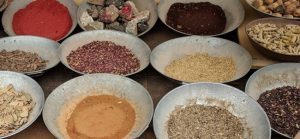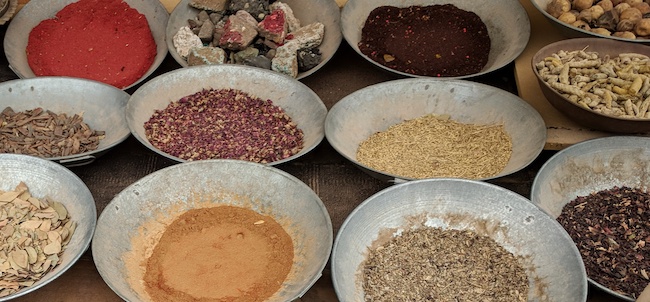
One of the more mystical rituals in the mishkan was the ktoret – the offering of incense on the altar. The incense, when burned by fire, provided a fragrant cloud of smoke that permeated the tent of the mishkan. The Torah is very exact and detailed in describing the ingredients and formula that formed the ktoret in the mishkan and later in the Temple, which produced this powerful fragrance. The Talmud states that when the incense was being prepared in the Temple in Jerusalem the goats pasturing downwind in Jericho sneezed!
There is no doubt that the incense did provide a very strong and pungent fragrance, though nowhere is it mentioned what this fragrance was comparable to. The Talmud adds that if the incense mixture would be combined with honey, then its smell would be so pleasant that it would prove to be irresistible. Why, then, was no honey added to the formula of the incense? The Torah itself forbade this addition to the incense mixture, by stating explicitly that honey was not to be introduced on the altar. There is a profound lesson to be learned here.
The Torah’s instructions are not to be improved upon by human tastes, fads and currently popular ideas. The mystique of the incense offering is not to be enhanced by human preferences. Jewish history has shown us that all such “improvements” were eventually discarded. The Torah deals with eternity, and not with current moods that always change. The Torah itself is the sole arbiter of what the fragrance of the incense offering should be.
The incense offering was also deemed to be dangerous, if not lethal, to those priests performing the service. This was especially true on Yom Kippur when the High Priest himself performed the service upon entering the Holy of Holies with the incense pan and coals in his hands and arms. The Talmud records that during Second Temple times there were many priests who were unworthy of being the High Priest and obtained their position only by means of corruption and graft. Their corpses literally had to be dragged out of the Temple’s precincts, since they died from the incense offering ritual. We do not find such lethal danger attached to any other duties of the High Priest in the Temple service.
But as in the physical world, so, too, is it in the mystical spiritual world – that which has the power to destroy also possesses the power to heal and bless. The incense offering was the source to ensure financial prosperity and abundance for the Jewish people. Even today, biblical verses regarding the incense offering are recited daily by many as a prayer for monetary success and physical welfare. It is the mystery of all this that so intrigues us. It remains one of the hidden treasures of the Torah that are not yet revealed to us. The ktoret retains its eternal fragrance of mystery. And we are not to add or detract from its Torah formulation.
Shabbat shalom
Rabbi Berel Wein


